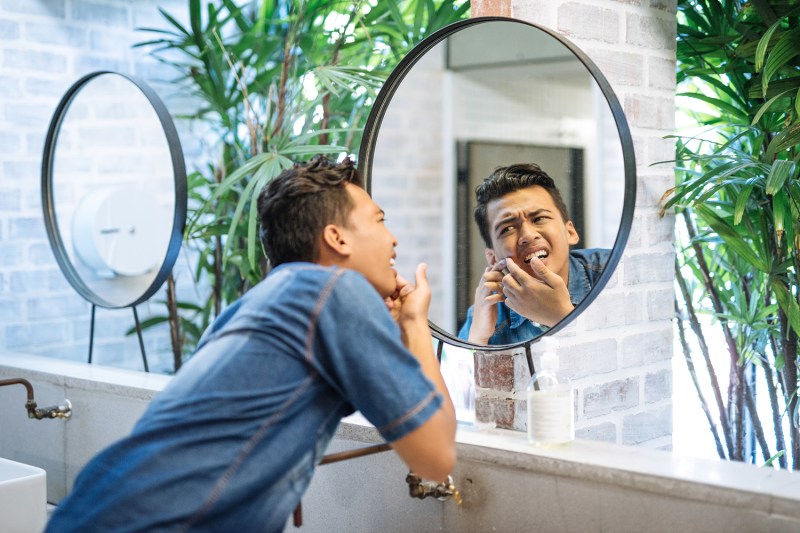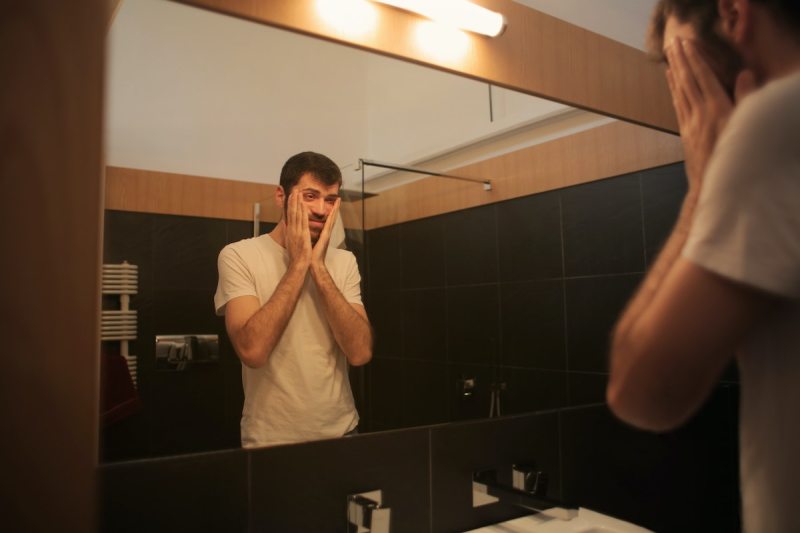
We all leave our teen years thinking that we’re finally leaving all of our skincare problems behind — sure, we have to worry about aging, wrinkles, and under-eye bags, but acne, blackheads, and pimples are supposed to be a thing of the past. Except, well, that doesn’t always happen, does it? There are all sorts of reasons why adults can find themselves facing skincare issues that they find embarrassing or, frankly, annoying — which is why a good skincare routine is so important.
Do you have tiny white bumps on your face? They might be whiteheads or pimples, but they could also be milia. Here’s what you need to know.

What are milia?
Milia are tiny white or yellowish bumps most commonly found on a person’s face. They may resemble whiteheads or pimples, but are not a form of acne. These small protrusions are actually cysts that develop when a protein called keratin gets trapped under the surface of your skin. Milia are not painful and do not require medical attention, but can be irritating as they tend to develop close to a person’s eyelids.
Milia, or “milk spots,” are typically found in babies who eventually grow out of the skin condition. In fact, nearly half of all babies and infants will experience an outbreak of milia toward the beginning of their childhood. However, excessive milia is passed on genetically and can continue to affect people well into their adulthood, according to the Cleveland Clinic. If one or both of parents suffer from milia into their adulthood, it is probable their child will too.
Most of these tiny bumps will fall off within a couple of weeks. However, without proper care, they can stay on your face for months or even up to a year. It’s important to practice consistent hygiene and skincare techniques to reduce your chance of developing milia and ridding yourself of them quickly. Someone with this skin condition may go for years without developing any new spots, only to have a breakout occur seemingly randomly.
Milk spots can pop up anywhere. It’s possible to find them anywhere that skin cells may reproduce, such as on your arms or legs, genitals, or even inside your mouth.
What causes milia to appear?
There are several reasons why a person might experience an “outbreak” of milia, or just one milium to appear. Keratin is the protein that helps hair, nails, and skin grow. When skin cells work together to make a new layer of skin, they must first shed the old, dead skin cells from your body. Sometimes these keratin-rich cells cling to your body as a new layer of skin grows on top of it, trapping them. Over time, the dead skin cells harden to create these cysts.
Prolonged exposure to the sun or recurring sun damage increases the chance of milia forming on your skin. Daily sun protection is vital to preventing milia and skin damage. Traumatic events like an injury, particularly a laceration, can also cause milk spots to appear during or after the healing process.
Believe it or not, there is such a thing as too much skincare. Under-eye creams designed to curb puffiness increase the skin cell turnover around your eyes where milia are likely to develop. Using too much product, such as eye creams, can actually cause more skin problems and milia to develop over time by trapping dead skin cells under new, healthy layers of skin. If you notice that you are repeatedly spotting the little white bumps around the same areas you apply your eye cream, reduce the usage of your product over time.
How to get rid of milia
Prevention is key — and I’m not talking about forest fires. Preventing milia from appearing in the first place is quicker and easier than trying to get rid of them once they’re already burrowed into your skin.
Milia prevention
Wearing facial sunscreen when going outside is easy and will help protect against milia and other, much more harmful sun-related maladies. When it comes to facial sunscreen, a moisturizer just won’t cut it. You need full-fledged protection on your face, with SPF of 30 or more.
Don’t try to pop it
Once the damage is done, milia removal can take time and patience. Do not try to pop your milia like a pimple, or pick them off like a scab. Improper removal can lead to lifelong scarring or infection. Both of these outcomes are much worse than the frequent, temporary milium popping up.
Exfoliate
Frequent facial exfoliation is one of the best tools at your disposal to remove a milium at home. Use a gentle exfoliating cleanser, or a tool like a facial scrubber, to safely and effectively remove milia over time. It’s amazing how effective a simple exfoliation is, especially if the milium is new and has not had time to dig deep into your skin. Exfoliating every other day will help rid yourself of any dead skin or debris on your face, regardless if you have milia or not.

Should I see a doctor?
Milia are not harmful beyond the surface and don’t require medical treatment. If you have severe milia and want them removed from your skin quickly, talk to your doctor about your options.
Typically, dermatologists or general practitioners may try cryotherapy to remove a milium. This can be a painful process, particularly on your face. Cryotherapy is fast and effective, though, if you have exhausted other options and want the unsightly bumps gone quickly. Doctors may also recommend an over-the-counter cream or antibiotic to help get rid of persistent spots.
Still, the best milia treatment is done at home and doesn’t require expensive products or a co-pay. If you’re prone to getting milk spots, it’s important to wash your face twice a day with warm water and a gentle soap. Again, exfoliation is key; just be mindful that you do not do scrub too frequently or ferociously.
Editors' Recommendations
- The best toner for men – cleanse your pores with one of these top products
- How to remove Halloween makeup and face paint
- The 14 best men’s face moisturizers with SPF to slow down aging
- How to tell if you have eczema (plus, the best advice derms have for eczema flare-ups)
- Snail mucin (snail slime) is great for your skin – an expert tells us why




